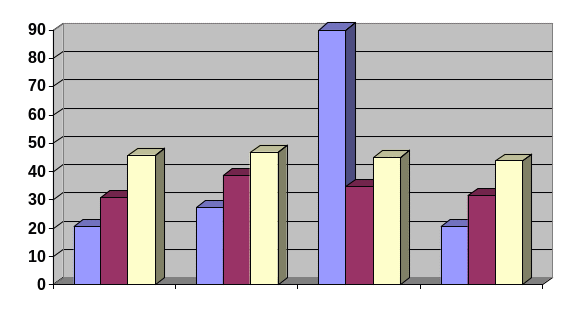
Table 2
Trace-metal and biological markers in oil spills
Weathered oil spill Unweathered oil spill
Marker parameter WDT ILO GSF WDT ILO GSF
V/Ni 1.49 3.21 1.74 1.51 3.33 1.71
Pr/Ph 2.30 0.70 0.86 2.39 0.75 0.90
Hopane isomerization
22S/22S + 22R 0.56 0.51 0.61 0.54 0.52 0.58
Homohopane
C35/C31 to C35 0.08 0.09 0.13 0.07 0.10 0.11
Sterane isomerizations
20S/20S + 20R 0.51 0.50 0.50 0.52 0.50 0.53
ß ß/ ß ß + à à 0.58 0.52 0.56 0.57 0.54 0.55
WDT, Western Desert Tvt; ILO, Iranian Light Oil; GSF, Gulf of Suez Fanar.
the V/Ni marker was compared with that of the unweathered, reference oils (Teble 2). This marker was observed to be practically unchanged and appeared reliable in spill source identification. The other metal markers deviated from those of reference oils as a result of weathering due to metal uptake from seawater by the oil spills (Osipov et al., 1990). The IR and GC profiles were also affected by weathering and would give misleading information on the source of suspected oils, as most of the light hydrocarbons have been lost mostly by evaporation. they were thus left out. Consequently, analysis of the high-MW, non-volatile hydrocarbons represents the best alternative in order to avoid weathering effects. In this respect the isoprenoids, hopanoids, and steranoids are so valuable.
Isolation of the saturate fractions of oils was followed by GC and GC/MS measurements. The Pr/Ph marker was evaluated from the corresponding GC readings. The Pr/Ph marker was evaluated from the corresponding GC readings. The distribution of n-alkanes in these chromatograms shows no sign of biodegradative change. Computerized GC/MS also provides spill profiles in which tri-, tetra-, and penta-cyclic hydrocarbons contribute to the terpane fingerprint (m/z 191) commonly used to relate oils and source rocks (Seifert et al., 1979). This mass fragmentogram (Figure 2 , has shown the 17a(H), 21b(H)-hopanes as major components, two C27 isomers Ts and tm together with the S and R stereoisomers at C-22 for each of the C31-C35 homologs. The 17b(H), 21a(H)-moretanes were also identified as minor components (Table 3). Despite the complexity of the sterane series, their characteristic mass spectra permitted them to be identified by mass fragmentography, and their markers to be tested for fingerprinting oil spills. The m/z 217 mass fragmentogram (Figure 3) revealed the basic components to be cholestanes, 24-methyl-, and 24-ethylcholestanes with stereochemical variations at carbons 13, 14, 17, and 20. the same types of terpanes and steranes were identified in the six oils and spills.
Of the various biomarkers deduced from these heavy hydrocarbons, the hopane isomerization and homohopane markers, (22S/22S + 22R) and (C35/C31 to C35), were applied. Moreover, two sterane isomerization markers were considered. The first is concerned with the isomerization at C-20 in the C29 14A(H),
M.A.Abu-Elgheit et al.

SCAN
Figure 2. Terpane (m/z 191) mass fragmentogram of a weathered oil spill.
17a(H)- steranes that causes the (20S/20S + 20 R) ratio to rise to an equilibrium value of 0.55 with increasing maturity. The second deals with the isomerization at C-14 and C-17 in the 20S and 20R C29 steranes that causes an increase in the ratio ( ß ß/ ß ß + à à ) again with maturity. This ratio is independent of organic source material and slower to reach the equilibrium value 0.71 than the (20S/20S + 20R) ratio, thus becoming effective at higher levels of maturity (Seifert & Moldowan, 1986).
The biomarkers adopted for the spilled and reference oils are complied in Table 2. although the oil conditions are different, the markers have remained
